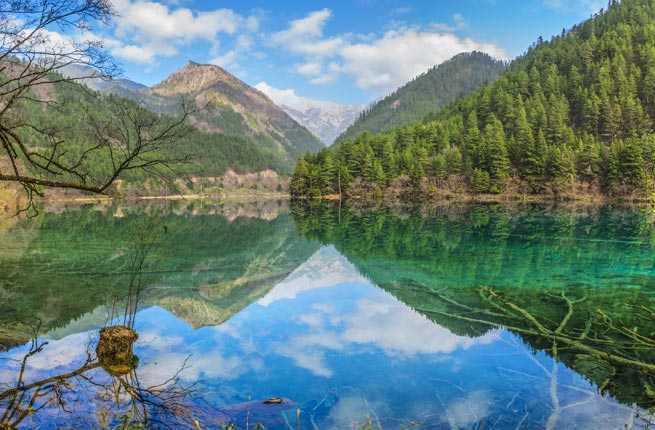
Given the beauty and majesty of America’s national parks, it can be easy to forget that countries all over the world are home to spectacular protected areas of their own. There are more parks than you could see in a single lifetime, so we’ve selected 50 eye-popping locales on 6 continents that showcase the diversity and splendor and other nations’ national parks. Prepare to be amazed by sights you didn’t even know existed on Earth.
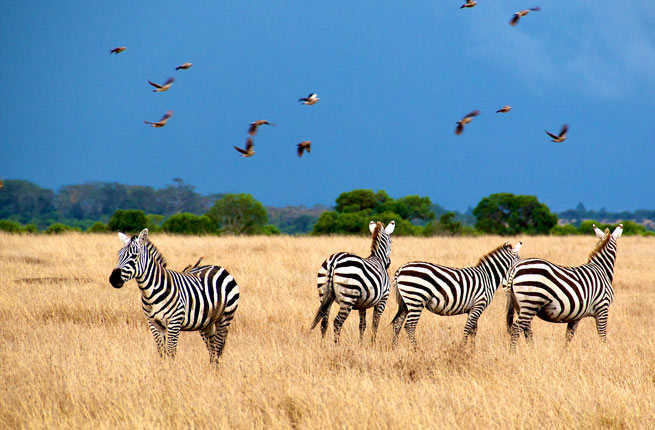
Serengeti National Park
Tanzania
The very name Serengeti is guaranteed to bring a glint to even the most jaded traveler's eye. It's 15,000 square km (5,791 square miles) of pristine wilderness and that's it. Its Maasai name Serenget means “Endless Plain.” A primeval Eden par excellence, named a UNESCO World Heritage Site in 1978 and an International Biosphere Reserve in 1981, Serengeti is all it's cracked up to be. You won't be disappointed.
PLAN YOUR TRIP: Visit Fodor’s Serengeti National Park Guide

Banff National Park
Canada
Few would deny that the Canadian Rockies are one of the most extravagantly beautiful ranges on Earth. The mountains and vast stretches of wilderness that make up the birthplace of Canada's first national park offer stunning scenery of glaciers, lakes, valleys, and snowcapped mountain peaks.
PLAN YOUR TRIP: Visit Fodor’s Banff National Park Guide

Torres del Paine National Park
Chile
Serious hikers often come to this area and use Puerto Natales as their base for hiking the classic “W” or circuit treks in Torres del Paine, which take between four days and a week to complete. Others choose to spend a couple of nights in one of the park's luxury hotels and take in the sights during day hikes.
PLAN YOUR TRIP: Visit Fodor’s Torres del Paine Guide

Fiordland National Park
New Zealand
Encompassing more than a million hectares of wilderness, Fiordland is the country's biggest national park. About half a million people visit each year to see playful dolphins and rain forest-coated mountains, but most converge on Milford and Doubtful sounds, the park's stars. Don't worry—the park is massive enough to easily absorb the crowds.
PLAN YOUR TRIP: Visit Fodor’s Fiordland National Park Guide

Plitvice Lakes National Park
Croatia
This 8,000-acre park is home to 16 beautiful, emerald lakes connected by a series of cascading waterfalls, stretching 8 km (5 miles) through a valley flanked by high, forested hills home to deer, bears, wolves, and wild boar. Thousands of years of sedimentation of calcium, magnesium carbonate, algae, and moss have yielded the natural barriers between the lakes, and since the process is ongoing, new barriers, curtains, stalactites, channels, and cascades are constantly forming and the existing ones changing.
PLAN YOUR TRIP: Visit Fodor’s Plitvice Lakes National Park Guide
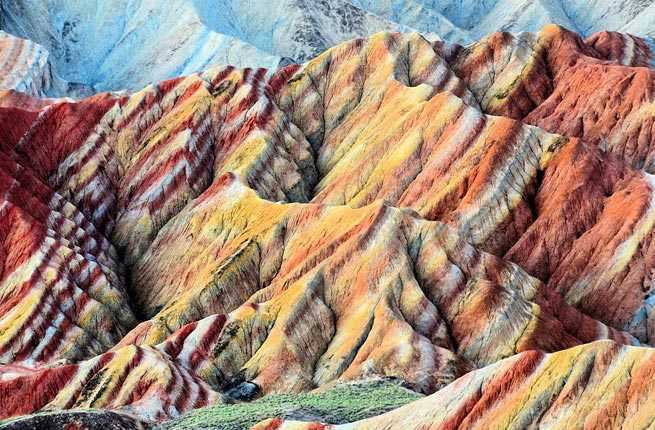
Danxia National Geological Park
China
Located in Gansu Province, this national park is home to eye-popping red cliffs that are sometimes called the Rainbow Mountains (it’s not hard to see why). It’s best to visit in the morning and at dusk, especially at sunset, when the colors change continuously. The rocky bands are well defined with colorful stripes, and, if it rains the day before, these colors will be even more gorgeous.
PLAN YOUR TRIP: Visit Fodor’s China Guide
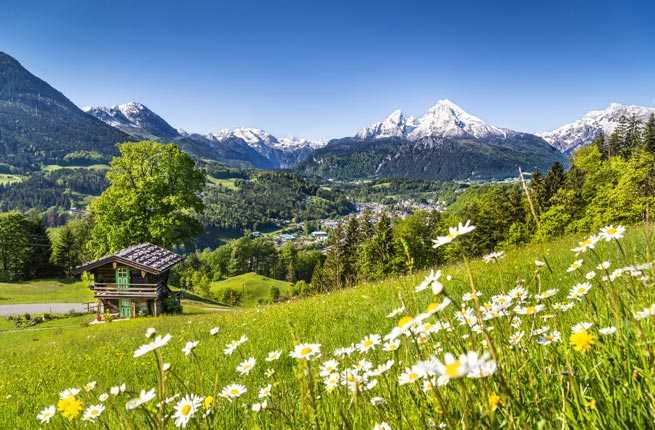
Berchtesgaden National Park
Germany
Established in 1978 to protect the landscape of the Berchtesgaden Alps, this park sits on the German–Austrian border. Visitors flock here year-round to ski, soak up the superb beauty of the Alpine panorama, hike, and visit the numerous wellness centers located here—the entire area has been declared a Kurgebiet (“health resort region”).
PLAN YOUR TRIP: Visit Fodor’s Germany Guide
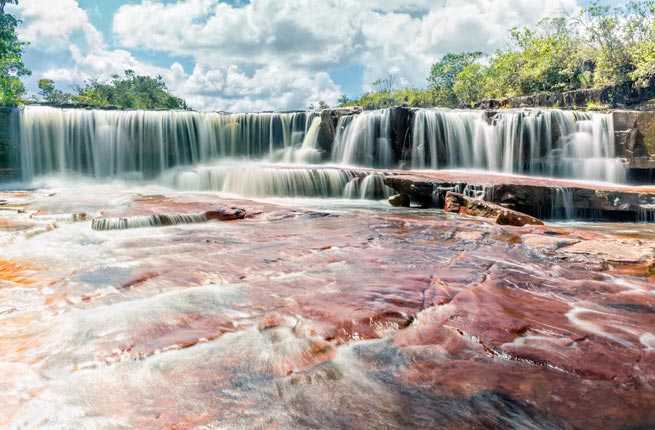
Canaima National Park
Venezuela
Approximately the size of Belgium or Maryland, Canaima is the sixt-largest national park in the world. More than half of the park is covered by tepuis, flat-top mountains with vertical sides.
PLAN YOUR TRIP: Visit Fodor’s Canaima National Park Guide
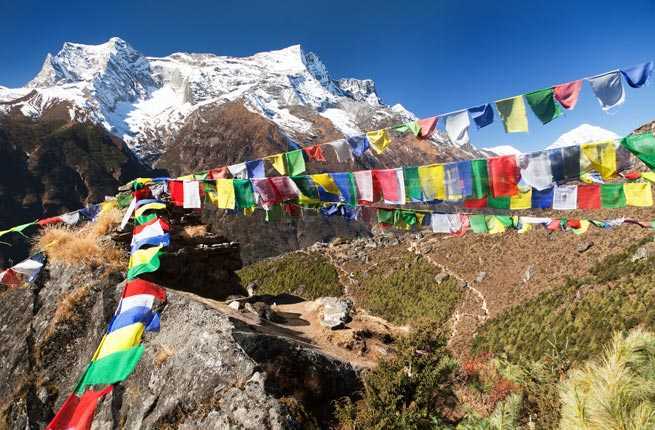
Sagarmatha National Park
Nepal
Established as a national park in 1976 and named a UNESCO World Heritage Site in 1979, this protected area in the Himalayas of eastern Nepal is dominated by Mount Everest, the highest mountain in the world.
PLAN YOUR TRIP: Visit Fodor’s Nepal Guide
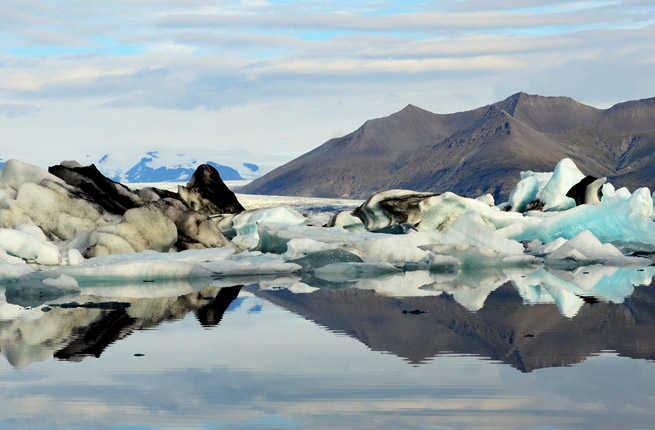
Vatnajokull National Park
Iceland
Within this massive park—Western Europe's largest—you'll find spectacular displays of nearly every geological feature and landscape Iceland has to offer: horseshoe-shape cliffs, thundering waterfalls, endless glacier tongues, active volcanoes, otherworldly lava fields, and more. A number of the park's natural attractions are unique sights, such as Dettifoss, the most powerful waterfall in Europe; Hljóðaklettar, a series of curious volcanic plugs; and Snæfell, the highest freestanding mountain in Iceland.
PLAN YOUR TRIP: Visit Fodor’s Vatnajökull National Park Guide
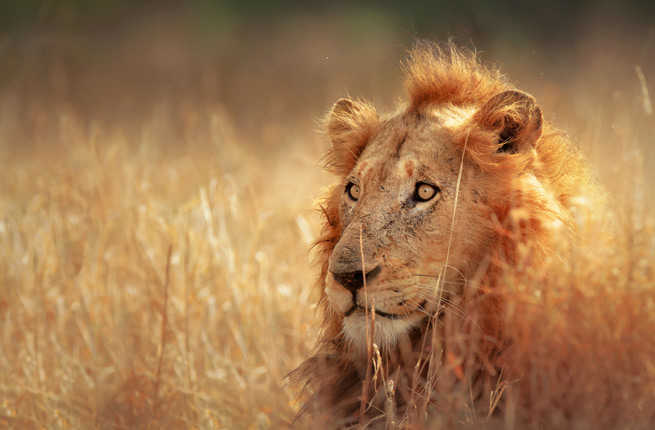
Kruger National Park
South Africa
Visiting Kruger is likely to be one of the greatest experiences of your life, truly providing ultimate “Wow!” moments. You'll be amazed at the diversity of life forms—the tallest (the giraffe), the biggest (the elephant), the funkiest (the dung beetle), the toothiest (the crocodile), and the glitziest (the lilac-breasted roller).
PLAN YOUR TRIP: Visit Fodor’s Kruger National Park Guide
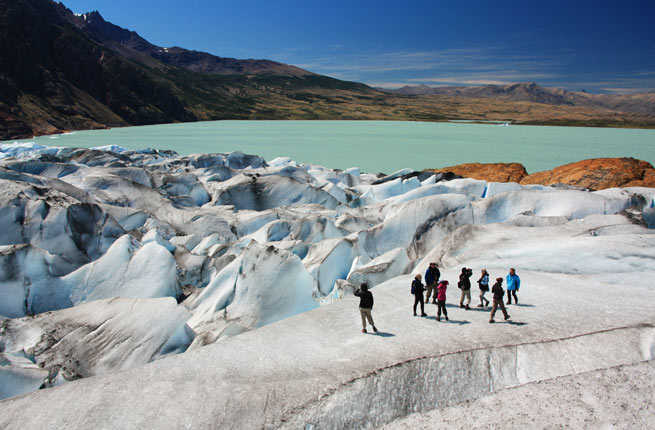
Los Glaciares National Park
Argentina
This park was created in 1937 as a showcase for one of South America's most spectacular sights, the Glaciar Perito Moreno. Rent a car and get an early start to beat the tour buses, or visit Perito Moreno in the off-season when a spectacular rupture is just as likely as in midsummer and you won't have to crane over other people's heads to see it.
PLAN YOUR TRIP: Visit Fodor’s Patagonia Guide

Arenal Volcano National Park
Costa Rica
Although the volcano is in a resting phase, it is still worth visiting the network of trails leading to old lava flows, rain forest, and a lookout point. The park is home to more than 200 species of birds, as well as monkeys, sloths, coatis, deer, and anteaters.
PLAN YOUR TRIP: Visit Fodor’s Costa Rica Guide
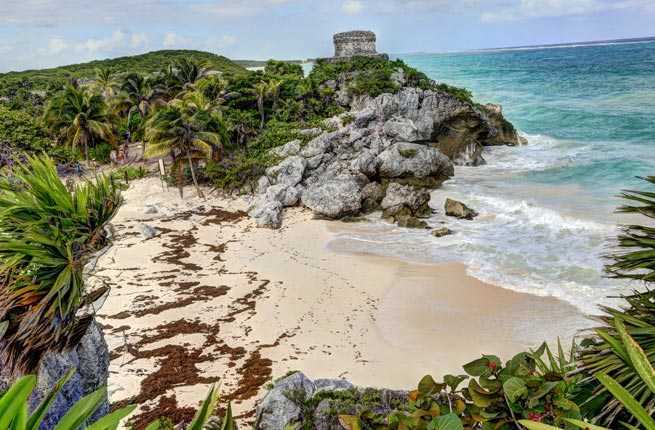
Tulum National Park
Mexico
Eighty minutes from Cancún, this park is home to awe-inspiring cenotes (sinkholes), dramatic coastline, and a a beautifully preserved archaeological compound that dates back to the Mayan era.
PLAN YOUR TRIP: Visit Fodor’s Tulum Guide
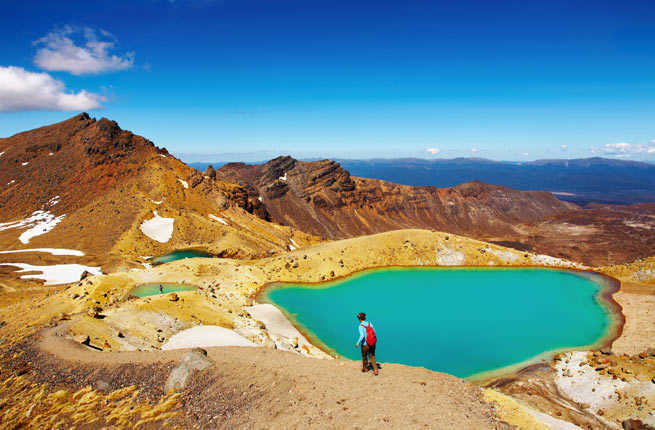
Tongariro National Park
New Zealand
Tongariro has a spectacular combination of dense forest, wild open countryside, crater lakes, barren lava fields, and rock-strewn mountain slopes. Its rugged beauty and convenient location, almost in the center of the North Island, make it the most popular and accessible of New Zealand's parks.
PLAN YOUR TRIP: Visit Fodor’s New Zealand Guide
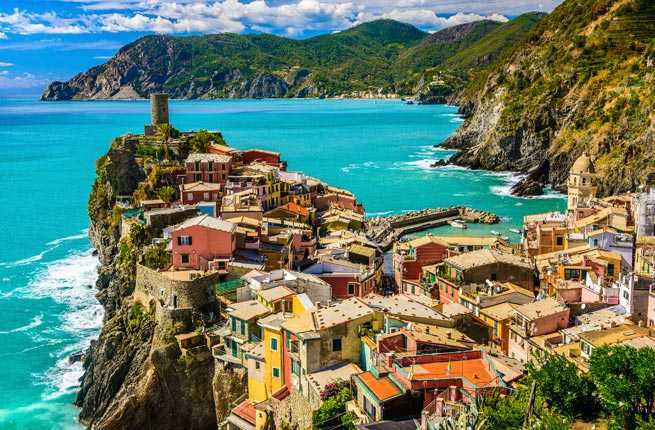
Cinque Terre National Park
Italy
This stunning seaside area in Liguria became Italy’s first national park in 1999. In their rugged simplicity, the five old fishing towns of Monterosso, Vernazza, Corniglia, Manarola, and Riomaggiore seem to mock the caked-on artifice of glitzy neighboring resorts. The terrain is so steep that for centuries footpaths were the only way to get from place to place. It just so happens that these paths provide beautiful views of the rocky coast tumbling into the sea, as well as access to secluded beaches and grottoes.
PLAN YOUR TRIP: Visit Fodor’s Cinque Terre Guide
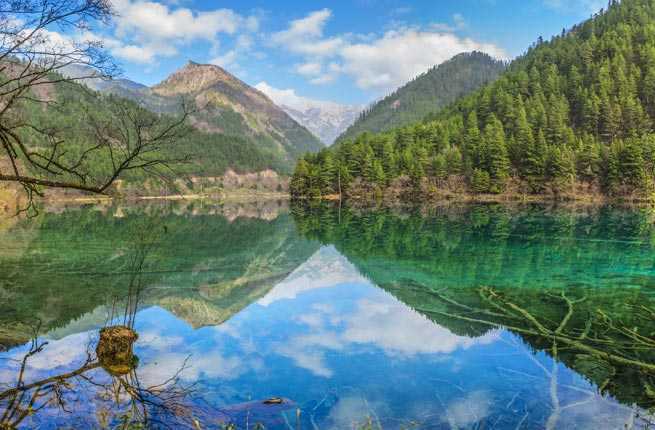
Jiuzhai Valley National Park
China
High among the snowcapped peaks of the Aba Autonomous Prefecture of northern Sichuan lies the Jiuzhaigou Nature Reserve, a spectacular national park filled with lush valleys, jagged peaks, a dozen large waterfalls, and most famously, a collection of iridescent lakes and pools. Jiuzhaigou has become one of the country's most popular tourist destinations, with more than 1.5 million people visiting every year.
PLAN YOUR TRIP: Visit Fodor’s Sichaun and Chongqing Guide
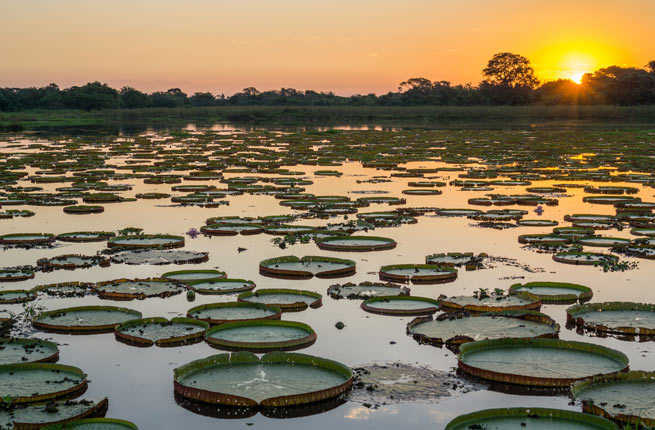
Pantanal Matogrossense National Park
Brazil
Encompassing the world’s largest tropical wetland area, the Pantanal extends into Bolivia and Paraguay. A portion of the Pantanal in Brazil was declared a national park in 1981 and has been protected ever since.
PLAN YOUR TRIP: Visit Fodor’s Brazil Guide

Snowdonia National Park
Wales
The park consists of 840 square miles of rocky mountains, valleys clothed in oak woods, moorlands, lakes, and rivers, all guaranteeing natural beauty and, to a varying extent, solitude. Its most famous attraction, by far, is the towering peak of Mt. Snowdon. The view from the top is jaw-dropping.
PLAN YOUR TRIP: Visit Fodor’s North Wales Guide
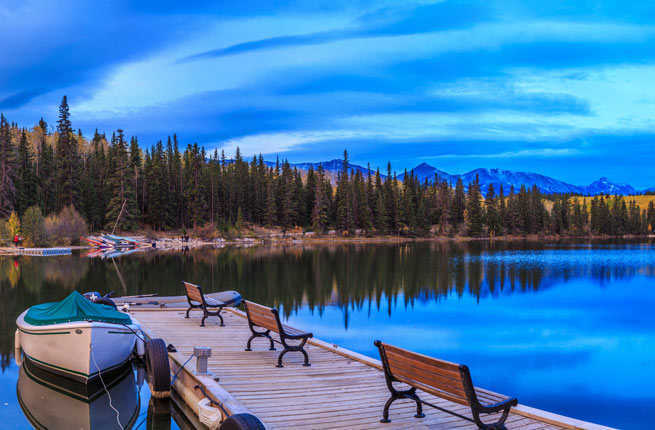
Jasper National Park
Canada
Jagged mountain peaks, shimmering glaciers, and crystal clear lakes are just part of the incredible scenery that makes up the largest and wildest of Canada's Rocky Mountain parks. Part of a collective UNESCO World Heritage Site, Jasper National Park is the planet's second largest dark sky preserve. Light pollution is so minimal here, so conditions are ideal for viewing the night sky, which both professional and amateur astronomers come here to do.
PLAN YOUR TRIP: Visit Fodor’s Jasper National Park Guide
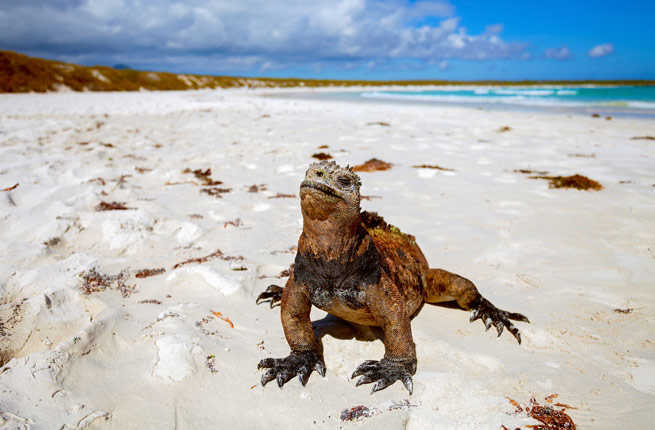
Galapagos National Park
Ecuador
From the moment you step onto these dazzling shores, you're confronted by giant tortoises basking in the sun, lava lizards darting between rocks, and frigates swooping overhead. No one who has walked among these unique creatures will ever forget the experience.
PLAN YOUR TRIP: Visit Fodor’s Galápagos Islands Guide
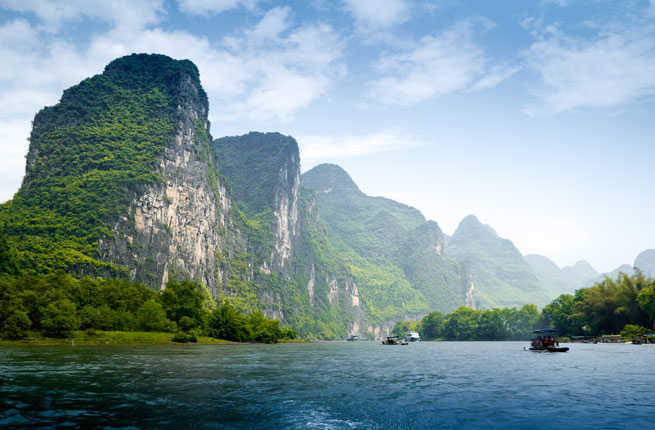
Guilin and Lijiang River National Park
China
Guilin has the good fortune of being situated in the middle of some of the world's most beautiful landscapes. This region of limestone karst hills and mountains, rising almost vertically from the earth, has a dreamy, hypnotic quality. They were formed 200 million years ago, when the area was under the sea. As the land beneath began to push upward, the sea receded, and the effects of the ensuing erosion over thousands of years produced this sublime scenery.
PLAN YOUR TRIP: Visit Fodor’s Southwestern China Guide

Namib-Naukluft National Park
Namibia
South of Walvis Bay, Namib-Naukluft Park is the fourth-largest national park in the world and is renowned for its beauty, isolation, tranquillity, romantic desert landscapes, and rare desert-adapted plants and creatures. The Namib Desert is considered the world's most ancient desert, at more than 55 million years old.
PLAN YOUR TRIP: Visit Fodor’s Namib-Naukaluft Guide
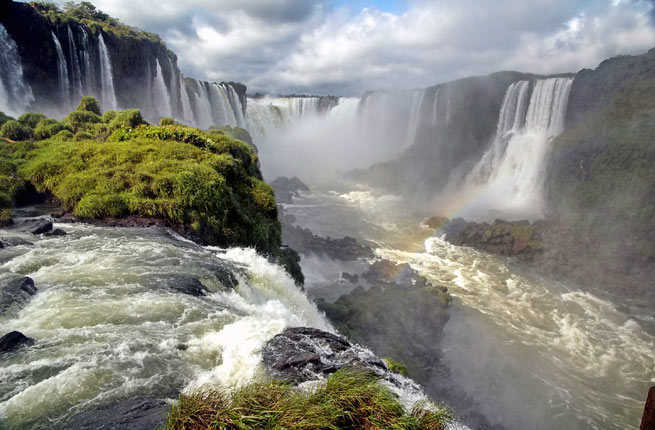
Iguazú National Park
Argentina
Iguazú consists of some 275 separate waterfalls—in the rainy season there are as many as 350—that plunge more than 200 feet onto the rocks below. They cascade in a deafening roar at a bend in the Iguazú River (Río Iguazú in Spanish, Rio Iguaçu in Portuguese) where the borders of Argentina, Brazil, and Paraguay meet.
PLAN YOUR TRIP: Visit Fodor’s Argentina Guide
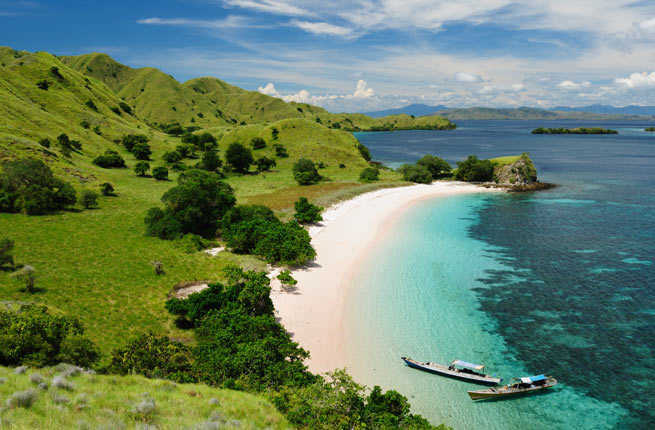
Komodo National Park
Indonesia
Indonesia's government established this park to protect the Komodo dragon in 1980. Pulau Komodo is also a UNESCO World Heritage Site—declared in 1992—and is now also a UNESCO Man and Biosphere Reserve. The 1,125 square km (434 square mile) sanctuary includes the islands of Padar, Motang, and Nusa Kode, the Wae Wuul reserve on Flores (the large island to the east), and a few small islets nearby, in addition to Pulau Komodo itself.
PLAN YOUR TRIP: Visit Fodor’s Indonesia Guide
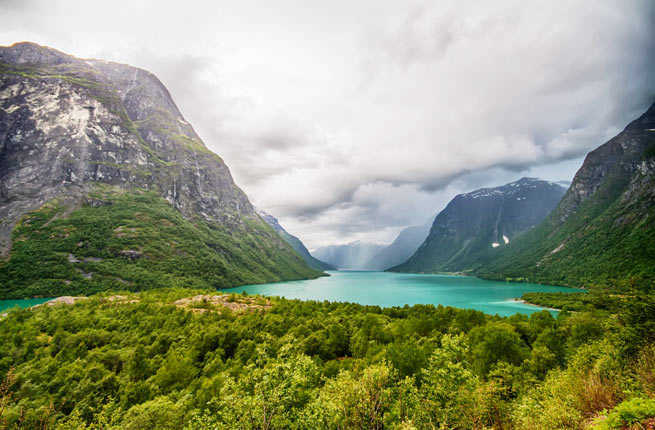
Jostedalsbreen National Park
Norway
Encompassing (and named after) the largest glacier on the European continent, Jostedalsbreen National Park spans 510 square miles, 310 of which are covered by glaciers. The glacier’s highest point is 6,621 feet above sea level for now; in recent years, the glacier has shrunk and you can now see ruins of farms that were overtaken by the glacier in the 18th century.
PLAN YOUR TRIP: Visit Fodor’s Norway Guide
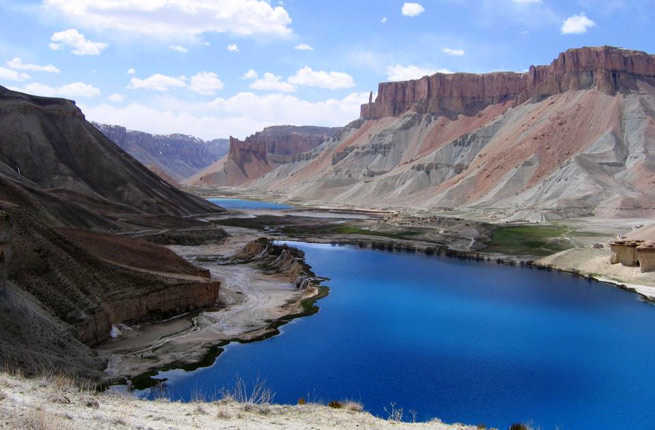
Band-e Amir National Park
Afghanistan
Known as Afghanistan’s Grand Canyon, Band-e Amir National Park is the first in the country and it draws thousands of visitors every year. The park is home to six lakes that are separated by naturally occurring dams made of travertine, a type of limestone.
PLAN YOUR TRIP: Visit Fodor’s Afghanistan Forum
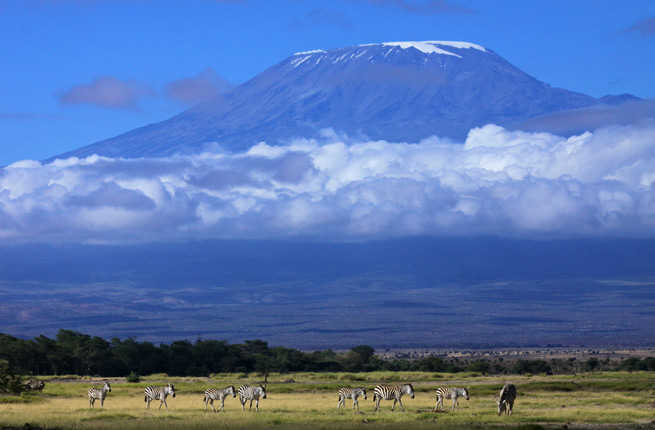
Kilimanjaro National Park
Tanzania
Kilimanjaro, a dormant volcano on the roof of Africa, is one of the closest points in the world to the sun (Chimborazo in the Andes is the closest). It’s also the highest peak on the continent and the tallest free-standing mountain in the world. So great is her global attraction that approximately 12,000 people from around the world attempt to reach her mighty summit each year.
PLAN YOUR TRIP: Visit Fodor’s Tanzania Guide
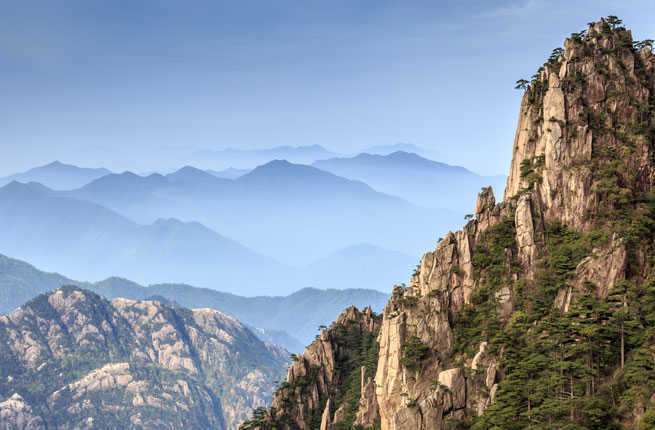
Huangshan National Park
China
Eastern China's most impressive natural landscape, the Yellow Mountains’ peaks thrust upward through rolling seas of clouds, spindly pines clinging precipitously to their sides. So beguiling were they that centuries of labor went into constructing the paths and stone stairways, some ascending gently through virgin forest, others sharp and steep. Since 1990, the area has been designated a UNESCO World Heritage Site.
PLAN YOUR TRIP: Visit Fodor’s China Guide
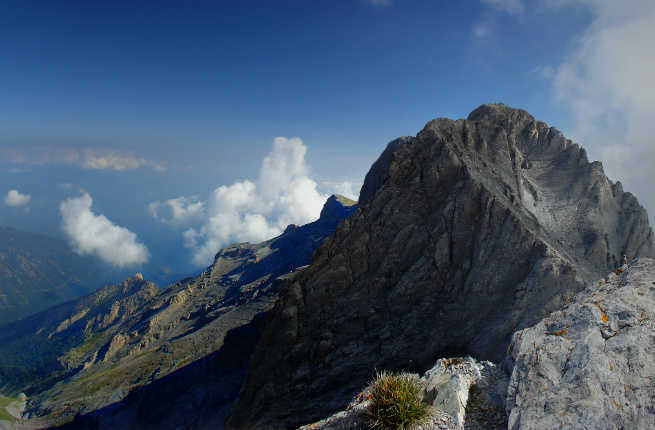
Olympus National Park
Greece
To understand how Mt. Olympus must have impressed the ancient Greeks, you need to see it clearly from several different perspectives. On its northern slope, the Olympus range catches clouds in a turbulent, stormy bundle, letting fly about 12 times as many thunder-and-lightning storms as anywhere else in Greece. From the south, if there is still snow on the range, it appears as a massive, flat-topped acropolis, much like the one in Athens; its vast, snowy crest hovering in the air, seemingly capable of supporting as many gods and temples as the ancients could have imagined. The truly awe-inspiring height is 9,570 feet.
PLAN YOUR TRIP: Visit Fodor’s Greece Guide
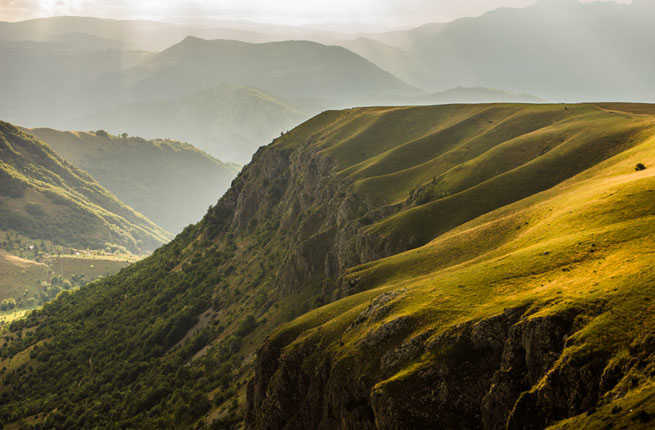
Durmitor National Park
Montenegro
Montenegro's largest protected area is Durmitor National Park, where the landscape has been shaped by glaciers, rivers, and underground streams. Roughly 50 peaks rising above 6,500 feet can be seen here, as can many glacial lakes, locally known as “mountain eyes.”
PLAN YOUR TRIP: Visit Fodor’s Montenegro Guide

Mu Koh Similan National Park
Thailand
The Mu Koh Similan National Marine Park consists of the nine Similan Islands, as well as Koh Tachai and Koh Bon, which are farther north. The diving around the Similan Islands is world class, with visibility of up to 120 feet; abundant blue, green, and purple coral; and rare marine life, such as the whale shark, the world's largest fish. In addition to sparkling, crystal-clear water, the Similan Islands also have ultrafine, powdery white-sand beaches and lush tropical forests.
PLAN YOUR TRIP: Visit Fodor’s Thailand Guide

Pyrénées National Park
France
Located along the border with Spain, Pyrénées National Park offers a variety of outdoor activities including hiking, skiing, and mountain climbing. Established in 1967, the park is home to approximately 70 animal species.
PLAN YOUR TRIP: Visit Fodor’s France Guide
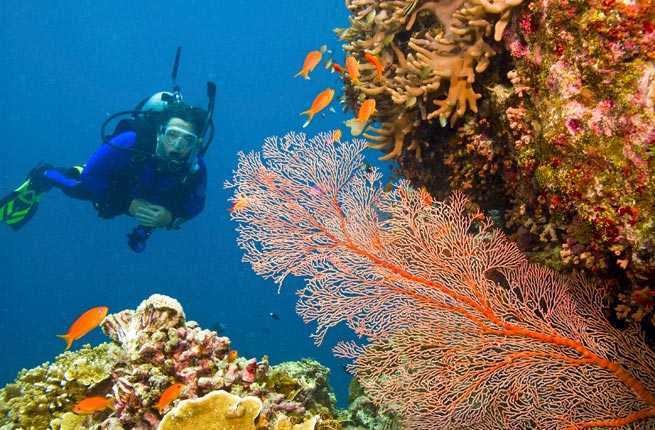
Great Barrier Reef Marine Park
Australia
A maze of 3,000 individual reefs and 900 islands stretching for 1,616 miles, the Great Barrier Reef is among the world's most spectacular natural attractions. The reef was established as a marine park in 1975, and the United Nations designated the Great Barrier Reef a World Heritage site in 1981. Altogether, it covers an area bigger than Great Britain, forming the largest living feature on Earth and the only one visible from space.
PLAN YOUR TRIP: Visit Fodor’s Great Barrier Reef Guide
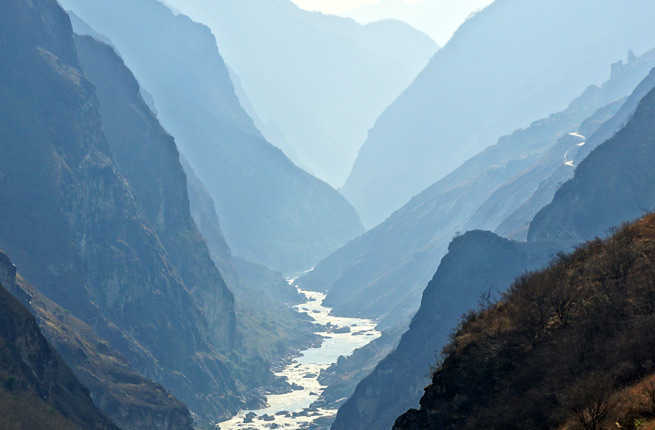
Yulong Xueshan National Park
China
This massive park in southwestern China is home to Jade Dragon Snow Mountain and Tiger Leaping Gorge. The deepest gorge in the world is hard to forget once you've seen it in person, and it makes an excellent trekking destination. If you're hiking along the upper trail, the 25-mile route can be finished in a day or two.
PLAN YOUR TRIP: Visit Fodor’s Southwestern China Guide
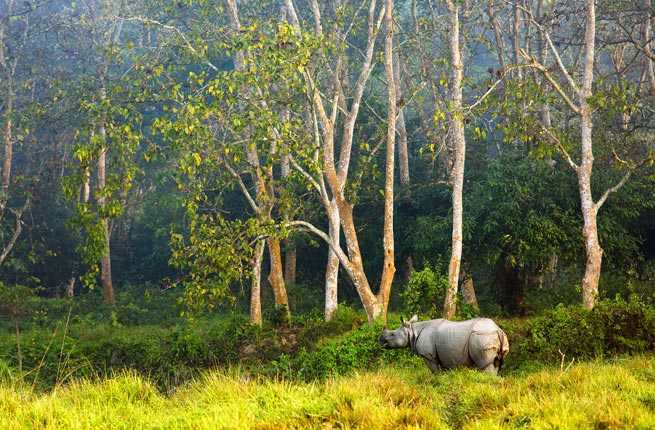
Chitwan National Park
Nepal
Established in 1973, Chitwan is Nepal’s first national park, and it became a UNESCO World Heritage Site in 1984. Today’s, it’s one of the country’s most popular tourist attractions. Spanning 360 square miles, the park is home to more than 40 mammalian species—leopards, Bengal tigers, rhinos—and more than 500 bird species.
PLAN YOUR TRIP: Visit Fodor’s Nepal Guide
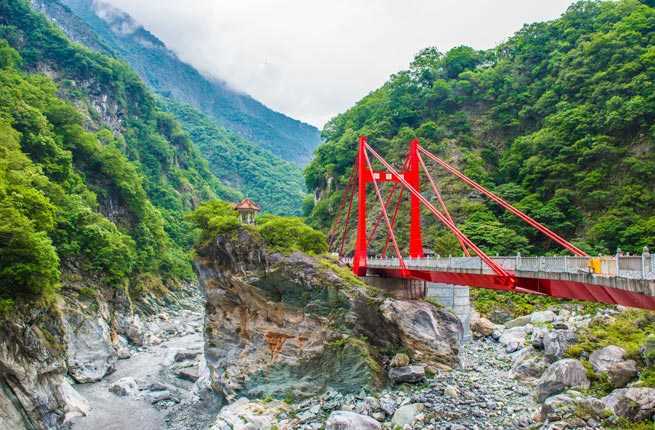
Taroko National Park
Taiwan
Home to the namesake Taroko Gorge, Taroko National Park is one of nine national parks in Taiwan. This one in particular has an interesting history: It was originally established as the Tsugitaka-Taroko National Park in 1937, when Taiwan was part of the Empire of Japan. After World War II, the Republic of China government no longer considered the area a national park, and it wasn’t until 1986 that the park was re-established.
PLAN YOUR TRIP: Visit Fodor’s Taiwan Guide
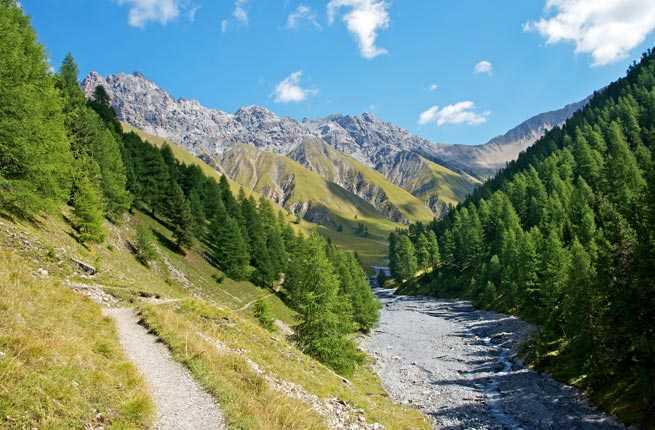
Swiss National Park
Switzerland
The Swiss National Park is a magnificent federal preserve of virtually virgin wilderness teeming with local wildlife. Currently the only national park in Switzerland, it was one of the first in all of Europe, and it is among the most highly protected areas in the world: It’s forbidden for visitors to leave the main road, build fires, camp, disturb animals and plants, or take home anything found in the park.
PLAN YOUR TRIP: Visit Fodor’s Switzerland Guide
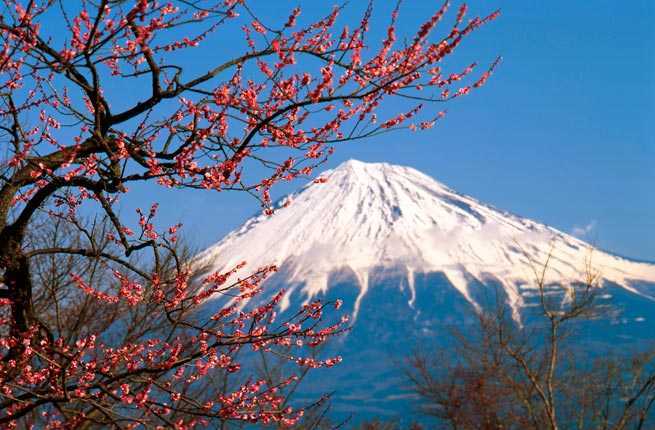
Fuji-Hakone-Izu National Park
Japan
Unlike most other national parks, which consist of one designated area, Fuji-Hakone-Izu National Park is comprised of four general areas: the Mount Fuji area, the Hakone area, the Izu Peninsula, and the Izu Islands. Accordingly, the park includes a wide array of geographic features including natural hot springs, mountainous areas, and more than 1000 volcanic islands. Due to its close proximity to Tokyo, this is the most visited national park in Japan.
PLAN YOUR TRIP: Visit Fodor’s Tokyo Guide
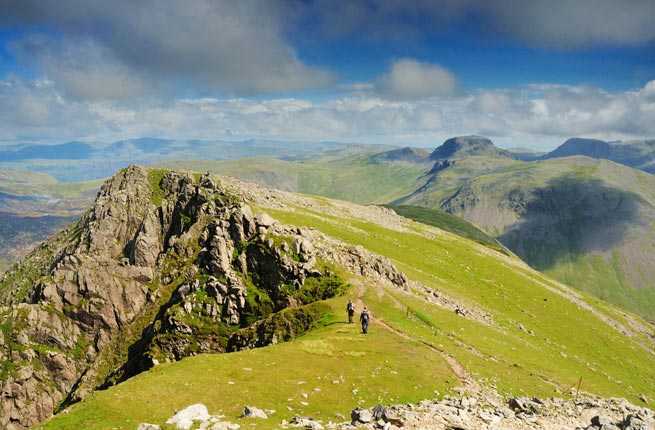
Lake District National Park
England
“Let nature be your teacher.” Wordsworth's ideal comes true in this popular national park of jagged mountains, waterfalls, wooded valleys, and stone-built villages. No mountains in Britain give a greater impression of majesty; deeper and bluer lakes can be found, but none that fit so readily into the surrounding scene. The Lake District is a contour map come to life, covering an area of approximately 885 square miles and holding 16 major lakes and countless smaller stretches of water. The scenery is key to all the park's best activities: you can cross it by car in about an hour, but this is an area meant to be walked or boated or climbed.
PLAN YOUR TRIP: Visit Fodor’s Lake District Guide

Borjomi-Kharagauli National Park
Georgia
Southwest of the capital of Tbilisi lies this magnificent park, one of the largest in Georgia. Its history dates to the medieval period, when it was primarily used as hunting grounds by the local aristocracy, but it was not until 2001 that it was inaugurated as a national park.
PLAN YOUR TRIP: Visit Fodor’s Georgia Guide
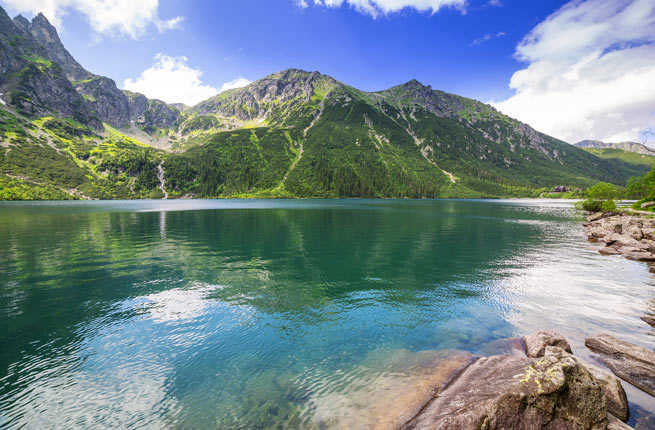
Tatra National Park
Poland
Bordering on northern Slovakia, where there is a also a park of the same name, Tatra National Park is home to the eponymous mountain range, which forms part of the Western Carpathian Mountains. The park also features more than 600 caves (only 6 are open to the public), 30 mountain lakes, and animals including bears, wolves, and otters.
PLAN YOUR TRIP: Visit Fodor’s Poland Guide
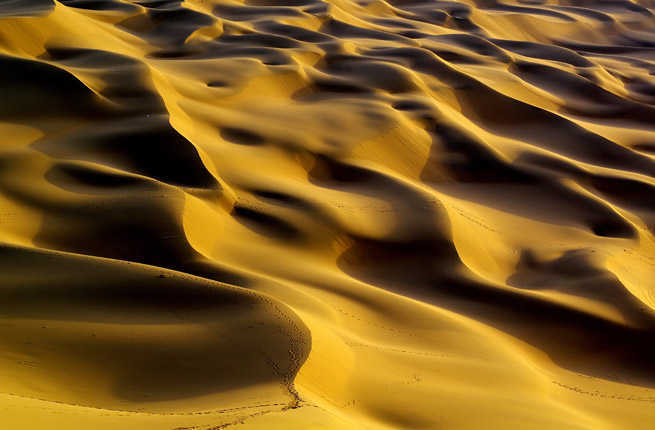
Kumtag Desert National Park
China
Located in the western province of Xinjiang, the Kumtag Desert has a dramatic, arid landscape with shifting sands and huge dunes. Designated as a national park in 2002, the desert is actually in a natural process of expansion beyond its previous borders.
PLAN YOUR TRIP: Visit Fodor’s China Guide

Valley of Flowers National Park
India
Designated a national park in 1982 and later named a World Heritage Site, the Valley of Flowers is a high-altitude Himalayan valley known for its endemic alpine flowers. An important site for mountaineers and botanists, this hard-to-reach area has also been a place of meditation for Indian yogis, and it’s even referenced in the Hindu religion.
PLAN YOUR TRIP: Visit Fodor’s India Guide
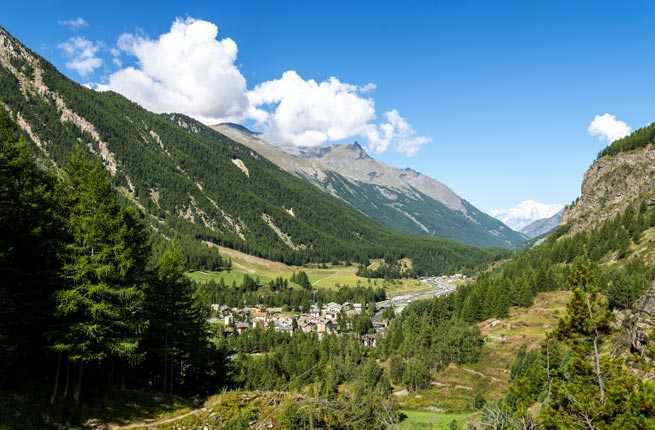
Gran Paradiso National Park
Italy
This huge park was once the domain of King Vittorio Emanuele II (1820–78). Bequeathed to the nation after World War I, it is one of Europe's most rugged and unspoiled wilderness areas, with wildlife and many plant species protected by law. The park is one of the few places in Europe where you can see the ibex (a mountain goat with horns up to 3 feet long) and the chamois (a small antelope). Try to visit in May, when spring flowers are in bloom and most of the meadows are clear of snow.
PLAN YOUR TRIP: Visit Fodor’s Italy Guide

Zhangjiajie National Forest Park
China
One of several national parks in the Wulingyuan Scenic and Historic Interest Area in Hunan Province, Zhangjiajie is known for its distinct, pillar-like formations, which were the inspiration for the floating Hallelujah Mountains seen in the film Avatar.
PLAN YOUR TRIP: Visit Fodor’s China Guide
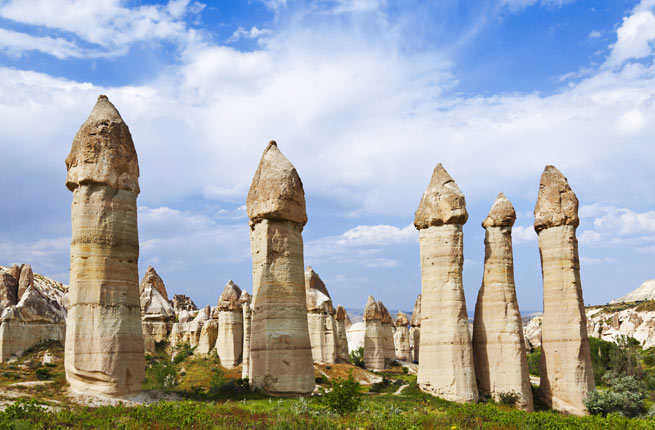
Göreme National Park
Turkey
The defining feature of this national park in the region of central Turkey called Cappadocia is the unique rock formation known as a “fairy chimney.” This rocky landscape has networks of ancient underground settlements and prime examples of Byzantine art.
PLAN YOUR TRIP: Visit Fodor’s Cappadocia and Central Turkey Guide
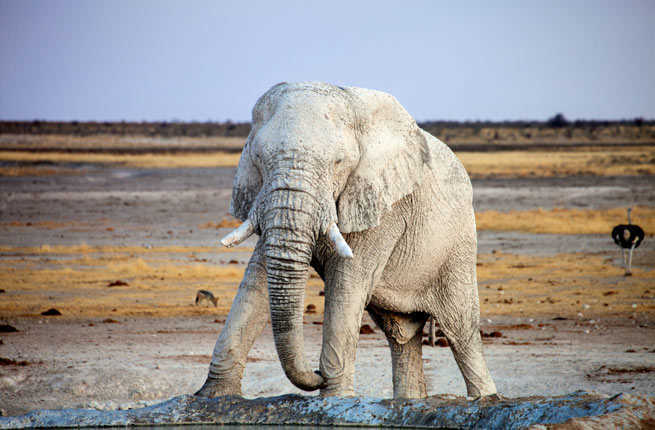
Etosha National Park
Namibia
Although the park is never crowded with visitors like some of the East African game parks, the scenery here is no less spectacular: huge herds that dot the plains and gather at the many and varied water holes. The dust devils, mirages, and terrain that changes from densely wooded thickets to wide-open spaces and from white salt-encrusted pans to blond grasslands, will keep you captivated for hours.
PLAN YOUR TRIP: Visit Fodor’s Etosha National Park Guide

Kakadu National Park
Australia
This national park is a jewel among the Top End parks, and many visitors come to the region just to experience this tropical wilderness. Beginning east of Darwin, and covering some 19,800 square km (7,645 square miles), the park protects a large system of unspoiled rivers and creeks, as well as a rich Aboriginal heritage that extends back to the earliest days of humankind.
PLAN YOUR TRIP: Visit Fodor’s Australia Guide

Yunnan Shilin National Park
China
The Stone Forest's groups of karst formations, first formed 270 million years ago, have been given names to describe their resemblance to creatures real (turtles) or mythological (phoenixes). Walking through the park you'll find plenty of Sani women eager to act as guides and sell you their handicrafts. The main trail has become rather commercialized, but there are plenty of similar formations in other parts of the park.
PLAN YOUR TRIP: Visit Fodor’s Southwestern China Guide


